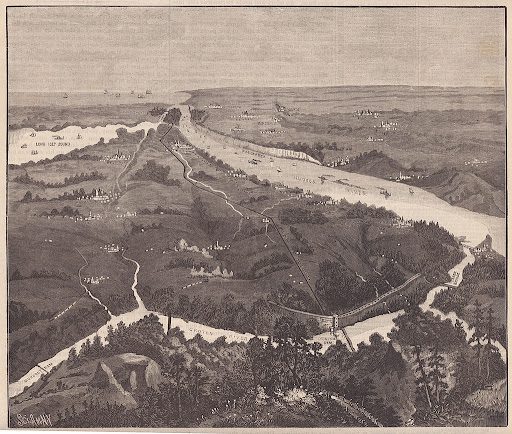Researched and Compiled by: Mario E. Introna II, Intern from College of Mount Saint Vincent
Water is considered an essential resource needed for a region to grow. Therefore, as regional centers spring up in new locations, water management is handled with paramount concern. If flora and fauna are exposed to polluted water, they are likely to develop fatal diseases. Hence, it is essential to consider how to safeguard the lives of those living in developing regions. New York is a city that witnessed a surge in its population during the Agricultural Revolution. Unfortunately, its rise resulted in water pollution, and the city’s cholera outbreak resulted in the deaths of several citizens. Thus, the Old Croton Aqueduct was an architectural and water engineering marvel designed to solve challenges emanating from polluted water by providing fresh and clean water for human consumption.
New York during the 1800s was revered as one of the fastest developing cities in the world. The region was full of intelligent scholars, critical thinkers, scientists, and engineers who achieved incredible feats regarding its growth and sustainability (Rappole, 2017). During the year 1800, the city had 60,000 people and a population density of 38,000. However, by 1830, the population shot to 185,000 and a population density of 58,900 (Aicher, 2018). Considering that the city was developing incredibly fast, there was little caution in implementing water systems, until 1832 when the cholera outbreak struck the town. David Bates Douglass was immediately appointed and asked to propose a feasible solution to the pollution challenge (Beach, 2021). Thus, he estimated the best route to take and began construction in 1837. The aqueduct was meant to divert water from higher regions upstate, using dams and reservoirs to regulate water flow to lowland regions. The system relied solely on gravity, considering the aqueduct sloped only 13 inches a mile, stretching from Yonkers to the Bronx (Burkett, 2020). Hence, the technical marvel managed to transport clean water to areas affected by water pollution since its opening.
The Old Croton Aqueduct was an architectural and water engineering marvel designed to solve challenges emanating from polluted water by providing fresh and clean water for human consumption. Without water, there is no possibility for life, thus illustrating its vitality as it sustains all living organisms. In several cases, regional centers are located next to large and natural water masses. However, not all water is suitable for consumption as contaminations are a common occurrence. New York’s ingenious solution to its water pollution issue resulted in the American Society of Civil Engineers terming the construction as a National Historic Civil Engineering Landmark. It was closed in 1881, having served the city and its environs for more than four decades. Therefore, its commissioning helped to save the forest now known as the Croton Woods of Van Cortlandt Park and its inhabitants who suffered from ailments emanating from water pollution.
References
Aicher, P. (2018). New York’s Democratic Aqueduct: Old Croton and Rome. Arion: A Journal of Humanities and the Classics, 26(2), 81-114.
Beach, B. (2021). Water infrastructure and health in US cities. Regional Science and Urban Economics, 103674.
Burkett, M. H. (2020). Silent and unseen: stewardship of water infrastructural heritage. Adaptive Strategies for Water Heritage, 21.
Rappole, G. H. (2017). The Old Croton Aqueduct. In Water-Supply and Public Health Engineering (pp. 183-194). Routledge.


